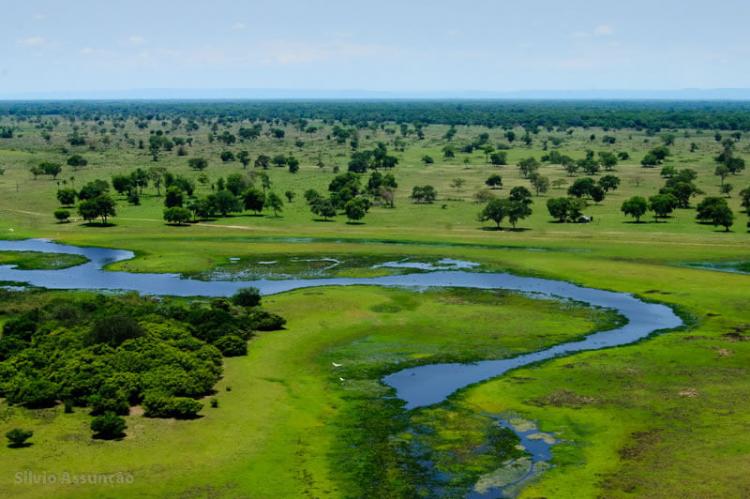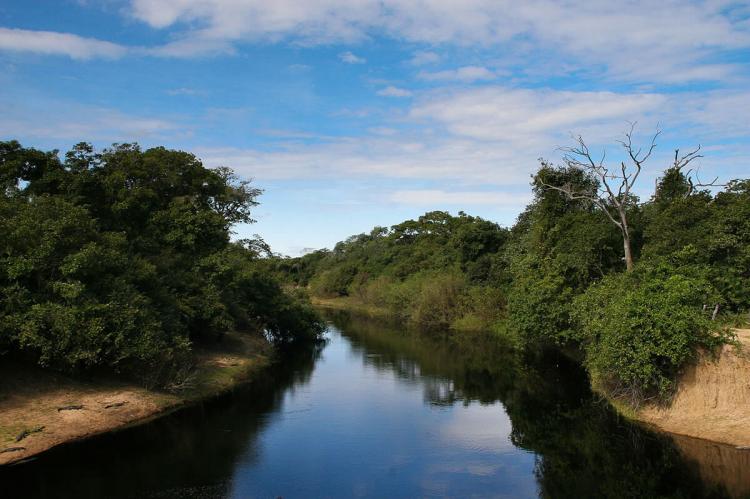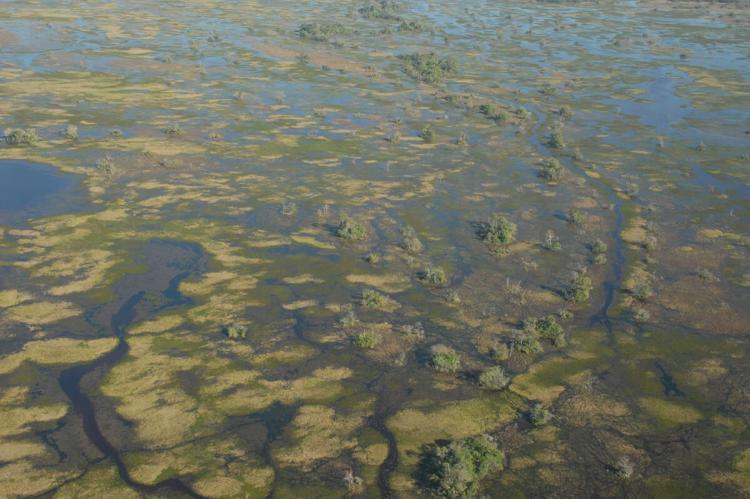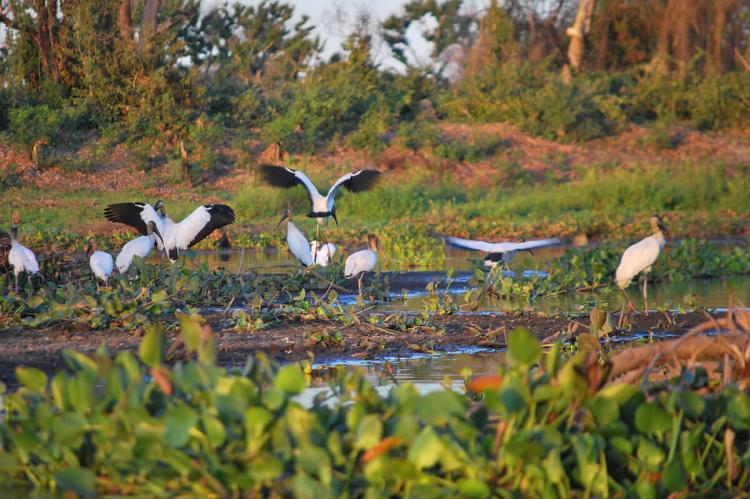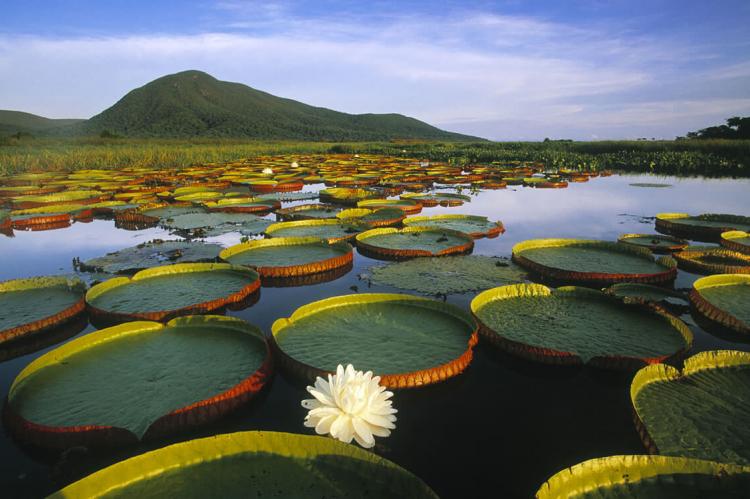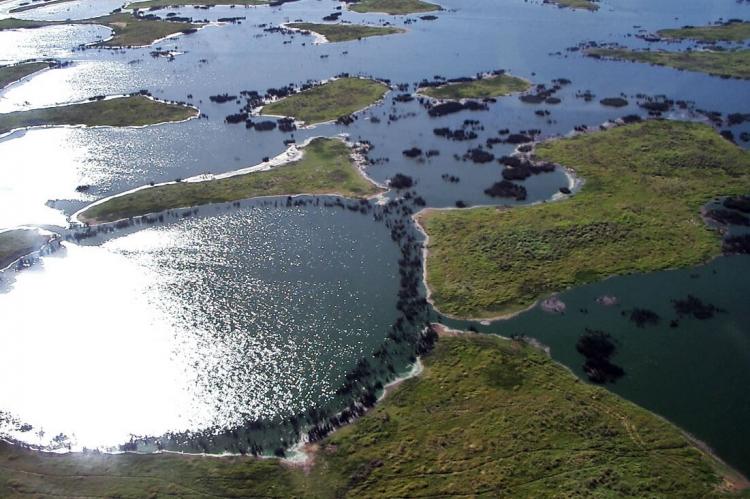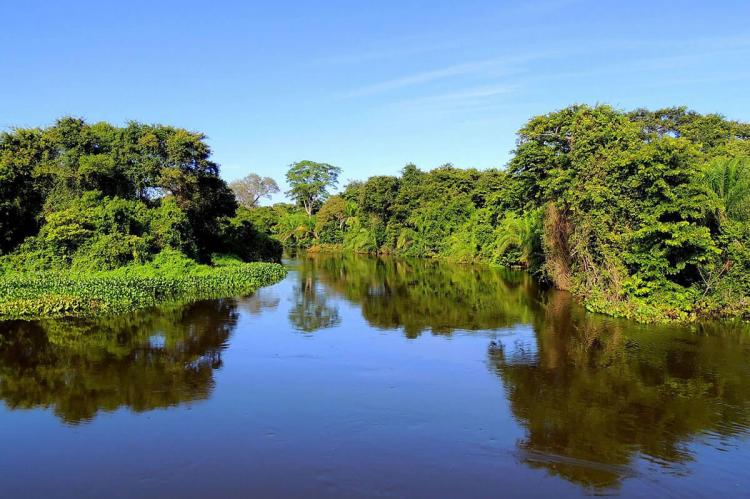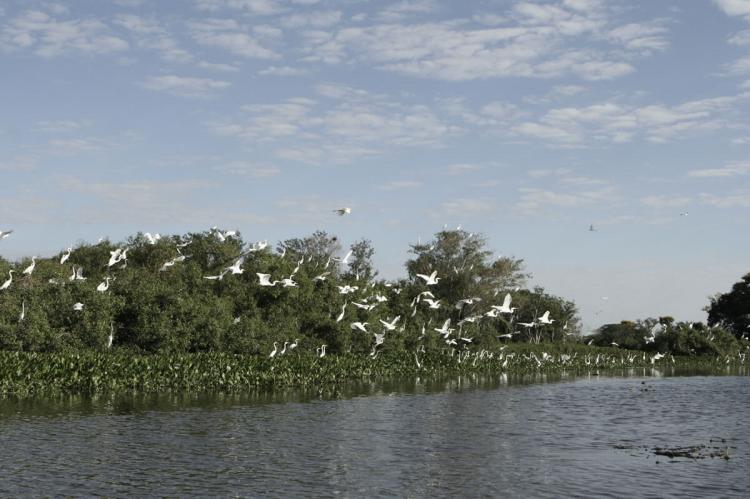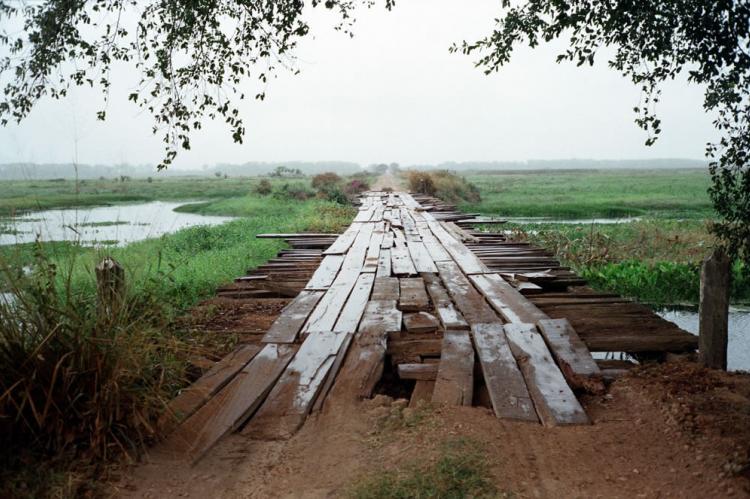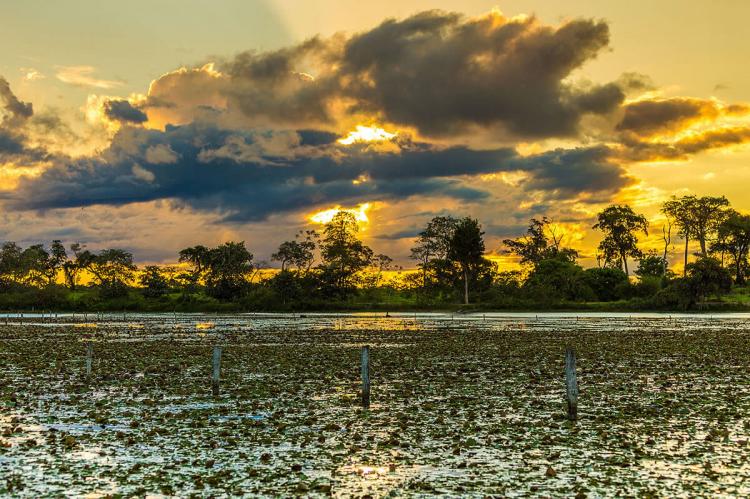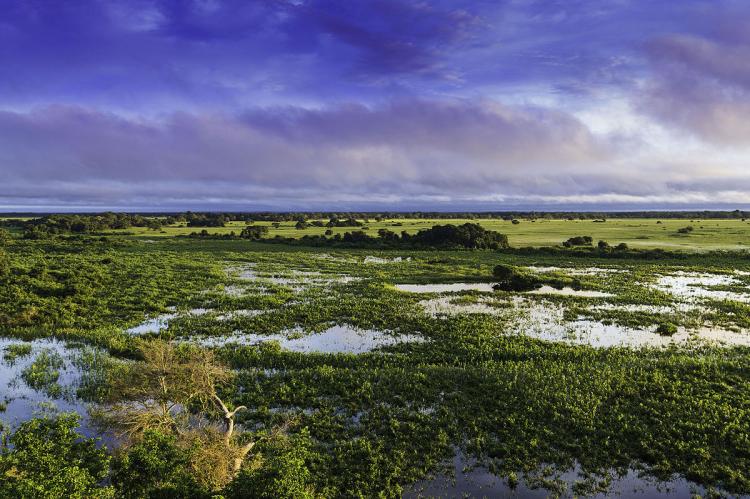Pantanal Conservation Area (Brazil)
The Pantanal Conservation Area in the Center-West region of Brazil comprises four contiguous protected areas within the Pantanal, the world's largest tropical wetland. The abundance and diversity of its vegetation and animal life are spectacular.
Pantanal Conservation Area
The Pantanal Conservation Area comprises a cluster of four contiguous protected areas within the Pantanal, the world's largest tropical wetland area:
-
The Pantanal Matogrossense National Park (which is also part of the Pantanal Biosphere Reserve)
-
The Special Reserves of Acurizal, Penha, and Doroche
This World Heritage Site covers 187,818 ha (464,108 acres) in central-west Brazil. It is located in the extreme southwest of Mato Grosso and Mato Grosso do Sul, near the international border with Bolivia and Paraguay.
The spectacular landscape of these wetlands, bordered by the Amolar mountainous chain, originates from the combination of cliffs and annual hydrological extremes.
The headwaters of the region's two major river systems, the Cuiabá River and the Paraguay River are located here. Consequently, the abundance and diversity of its vegetation and animal life are spectacular.
During the rainy season, the rivers overspill and flood vast regions between October and April, leaving only small areas inundated. At the end of this period, the waters slowly descend, leaving numerous small temporary lakes.
The transition between the seasonally flooded areas and the mountains is abrupt, and this ecological gradient is unique to the Pantanal region, offering a dramatic landscape.
Located between the river basins of Cuiabá and Paraguay, the Pantanal Conservation Area plays a crucial role in spreading nutritive materials during flooding and maintaining fish stocks in the Pantanal.
The Pantanal is essential for the conservation of biological diversity, and the World Heritage property contains representative habitats comprising around 80 species of mammals, 650 species of birds, 50 reptiles, and 300 fish.
In addition, the Reserve is vital for the maintenance of fish stock. The number of aquatic plant species found here is also remarkable.
Several worldwide threatened species are present here, including:
- the giant armadillo (Priodontesmaximus)
- the giant anteater (Myrmecophagatridactyla)
- the giant otter (Pteronurabrasiliensis)
- the marsh deer (Blastocerus dichotomus)
- the hyacinth macaw (Anodorhynchus hyacinthinus), which is the largest species of parrot
In addition, a healthy jaguar population (Panthera onca), a species almost threatened with extinction, is also present.
